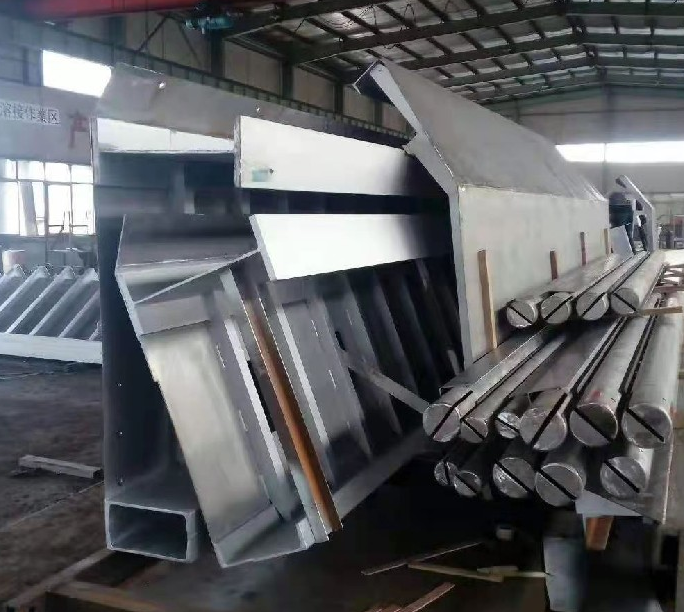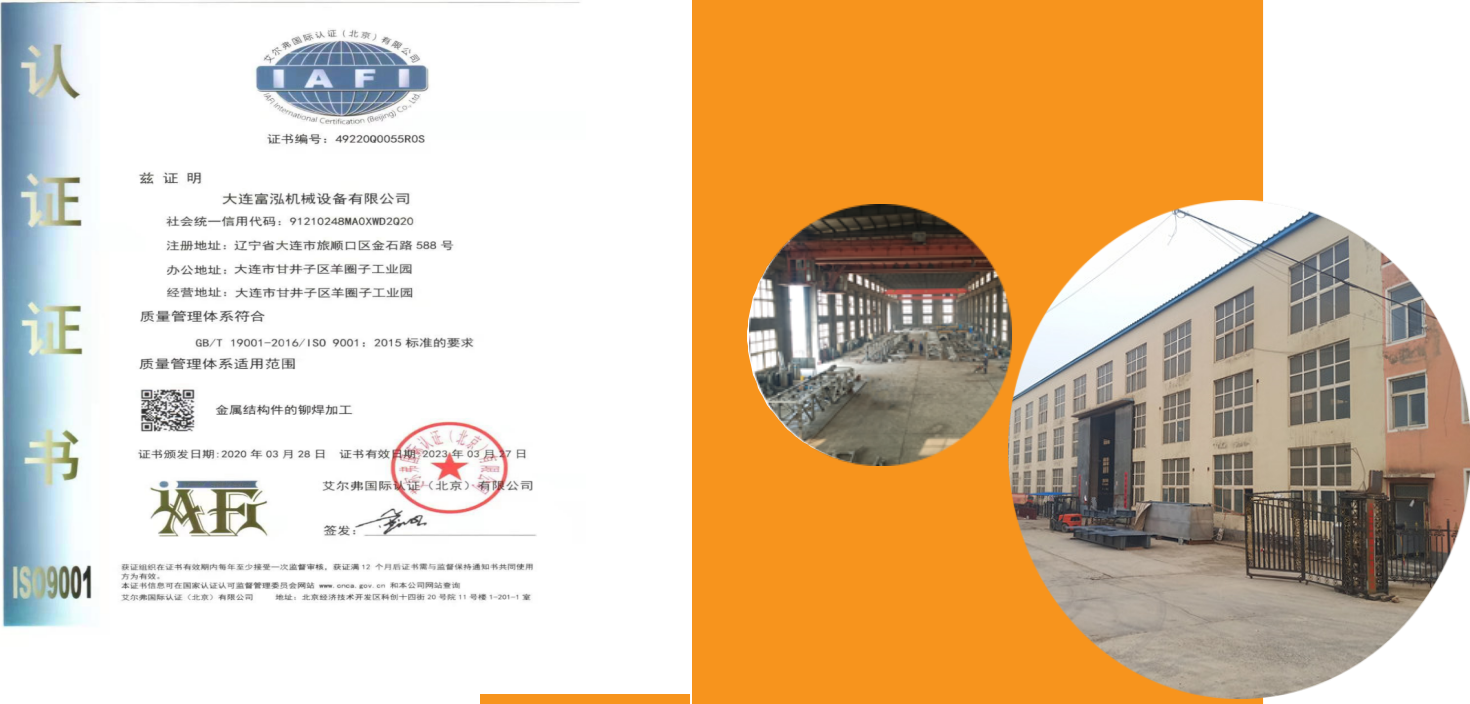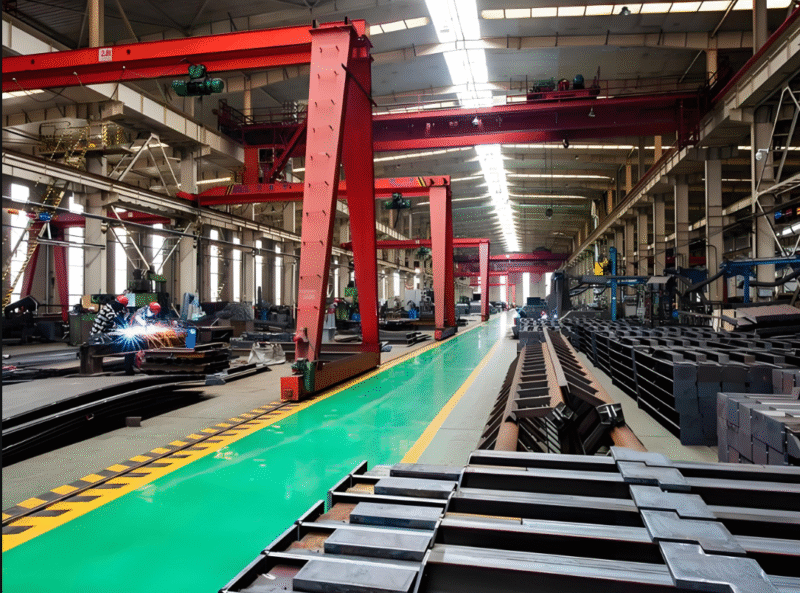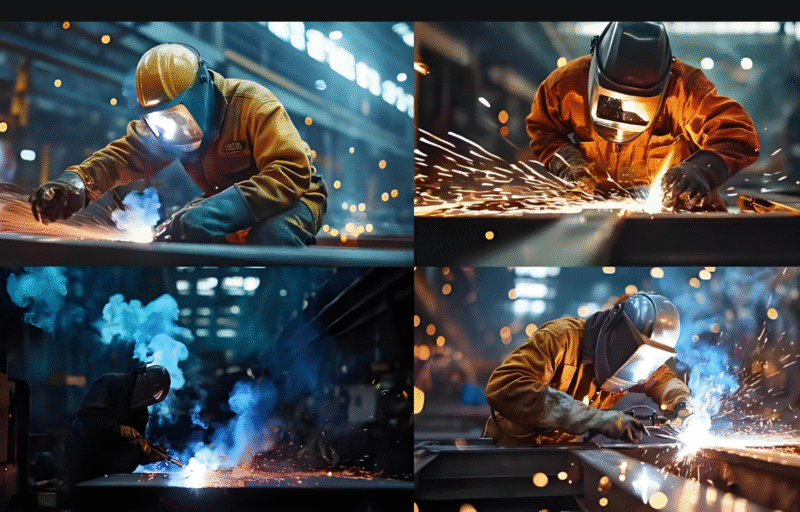Rivet Welding Processing andrivet factory: the core strength of modern metal structure fabrication
From the sturdy skeleton of heavy machinery to the complex components of precision equipment, riveting and welding processing with its unique connection technology, constructed a solid foundation for modern industrial manufacturing.
In the field of industrial manufacturing, the reliability and precision of joining technology directly affects the integrity and service life of the entire structure. As a service provider specialising in metal joining solutions, Rivet Welding Factory provides vibration-resistant and fatigue-resistant high-performance products for various industries by integrating the robustness of riveting with the continuity of welding. With the ever-increasing structural safety requirements of the manufacturing industry, the riveting and welding process is becoming the preferred joining technology for heavy-duty equipment, vibrating machinery and special working conditions.
Rivet welding technology analysis: the modern evolution of a traditional craft
Rivet welding is a type of electric welding, a manufacturing process in which the metal joining parts are brought to an atomically bonded state by heat or pressure. This process combines the advantages of both riveting and welding joining methods to form a unique composite joining solution.
Basic classification of rivet welding process
Depending on the characteristics of the process and the degree of heating, riveting and welding processing is mainly divided into the following categories:![图片[1]-铆焊加工与铆焊厂:现代金属结构制造的核心力量(可靠的铆焊厂应具备完善的设备配置和质量保障)-大连富泓机械有限公司](https://cndlfh.com/wp-content/uploads/2025/10/QQ20251002-200855-800x540.png)
Cold Rivet Welding: In cold rivet welding, the rivet post is deformed by high pressure. The cold flow causes large stresses in the area of the rivet post and is therefore only suitable for plastics with good ductility.
Hot Rivet Welding: In hot rivet welding, the compression weld head generates heat and therefore less pressure is required to form the rivet head on the rivet post. The quality of the joint depends on the control of the process parameters: temperature, pressure and time. Typical welding cycles are 1 to 5 seconds.
HOT AIR RIVET WELDING: In hot air rivet welding, the rivet post is heated by means of a stream of superheated air, which transfers heat through the air tubes surrounding the rivet post. The separate cold welding head then lowers and compresses the rivet post.
Ultrasonic Rivet Welding: In ultrasonic rivet welding, ultrasonic energy supplied by the welding head is used to melt the rivet post. Typical weld cycle time is less than 2 seconds.
Technical characteristics of rivet welding
Rivet welding processing has a number of outstanding features: it can save metal materials, reduce the weight of the structure; to achieve a small, big, big for small, the manufacture of heavy, complex machine parts and components, simplify the casting, forging and cutting process; welded joints have good mechanical properties and sealing; but also be able to create a bimetallic structure, so that the performance of the material to make full use of.
Core production capacity and process flow in a rivet welding plant
Professional Rivet Welding Factory has perfect production system and quality control process to ensure to provide customers with high quality riveting processing services.
Standard production process in a rivet welding plant
Formal riveting plants usually follow a strict production process:
Pre-preparation stage: making drawings according to technical requirements, making models according to drawings, dosing and modelling. This stage includes material selection and processing, selecting suitable master material and rivet material according to design requirements.
Processing and shaping stage: Includes inspection of the appearance of the workpiece and scribing and machining. Cutting, forming and pre-treatment of metal materials by means of specialised equipment.
Joining and integration stage: levelling and manual scraping of the workpieces are carried out. Welding and riveting operations are carried out at this stage to form a complete metal structure.
Post-processing and inspection: including appearance treatment, painting, packaging and warehousing. Meanwhile, strict quality inspection is carried out to ensure that the products meet the standards.
Equipment configuration of the riveting plant
Professional riveting and welding factories are equipped with advanced production equipment to guarantee processing accuracy and efficiency. For example, some manufacturers have high-precision processing equipment such as plate levelling lines, CNC laser cutting machines, plate shears, bending machines, sheet metal drawing and bending equipment, groove planers, laser welding machines, argon arc welding machines, gas welding machines, and so on.
Advantages and areas of application of rivet welding processing
Outstanding advantages of rivet welding processing
With its unique technical characteristics, rivet welding processing shows significant advantages in industrial manufacturing:
Excellent structural reliability: the riveted part can effectively absorb and disperse vibration energy, preventing fatigue cracks in the connected parts due to long-term vibration.
Overload Protection Mechanism: Under extreme load conditions, the riveted section acts as a “safety valve”, showing visible deformation and providing early warning signals before the structure fails.
Wide process adaptability: able to effectively connect metal components of different materials and thicknesses, solving the problems that are difficult to be handled by traditional connection methods.
Strong quality controllability: riveting quality can be confirmed by visual inspection, while welding quality can be verified by non-destructive testing, the dual quality assurance system improves the overall reliability of the product.
The main areas of application of rivet welding processing
Rivet welding processing technology has been widely used in various industrial fields:
Automotive industry: gluing parts to doors. Riveting and welding techniques are used extensively in automotive manufacturing to join body structures and key components.
Electronics and telecoms industry: fixing and connection of printed circuit boards.
Medical device manufacturing: Structural connections for precision medical instruments and equipment.
Heavy Machinery Manufacturing: Structural parts connection of heavy machinery such as engineering machinery, mining equipment, etc., such as excavator arm and mining crushing equipment.
Aerospace: aircraft fuselage connections and spacecraft structural component connections to meet the dual requirements of lightweight and high strength.
How to choose a professional rivet welding factory
Facing many rivet factory suppliers, how to choose the right partner becomes the key to ensure the success of the project.![图片[2]-铆焊加工与铆焊厂:现代金属结构制造的核心力量(可靠的铆焊厂应具备完善的设备配置和质量保障)-大连富泓机械有限公司](https://cndlfh.com/wp-content/uploads/2025/07/QQ20250724-210749-800x440.png)
Assessment of technical capacity and experience
When choosing a riveting plant you should focus on its technical strength:
Processing accuracy capability: Evaluate the accuracy level and stability of the manufacturer’s equipment, including the accuracy standard of its riveting welding plate / riveting welding platform.
Accumulation of professional experience: Examine the vendor’s project experience and technical accumulation in the specific field, and choose a supplier with rich experience.
Degree of process standardisation: Find out if the manufacturer follows standard processes and industry norms.
Examining equipment and quality systems
A reliable riveting plant should be well equipped and quality assured:
Advanced equipment configuration: examine whether the manufacturer has CNC laser cutting machine, laser welding machine, argon arc welding machine and other high-precision processing equipment.
Quality control system: know the manufacturer’s quality testing standards, such as the hardness standard of the working surface of the riveting welding platform (HB170-240 or between 187-255).
Certifications and standards: Check whether the manufacturer has relevant industry certifications, which reflect its professionalism and reliability.
Technological innovation and development trend of rivet welding manufacturing
Automation and Intelligent Development
Traditional riveting and welding processing is rapidly developing in the direction of automation and intelligence:
Robot riveting and welding system: industrial robots are used to realise automated riveting and welding operations, improving production efficiency and quality consistency.
Intelligent inspection technology: based on machine vision and sensor technology, real-time monitoring of riveting process parameters and quality indicators.
Adaptive control system: automatically adjust the process parameters according to the material characteristics and changes in working conditions to achieve the optimal riveting effect.
Integration of new materials and processes
As new materials continue to emerge, riveting and welding processing technology continues to innovate:
Composite material riveting: develop special riveting process applicable to the connection of composite materials and metals to expand the scope of application.
Dissimilar material joining: Develop specialised riveting solutions for the joining of materials of different natures.
Special environment riveting: development of riveting technology and materials suitable for extreme environments (high temperature, low temperature, corrosive environments).
SEO Guide for Rivet Welding Processing
In order to get your rivet machining website better indexed and ranked on Google, here are some key strategies:
Keyword strategy and content optimisation
Precise positioning of keywords: in the content of the natural integration of “riveting welding processing”, “riveting welding plant” and other core keywords, as well as “precision riveting”, ” large rivet welding processing” and other long-tail keywords.
Optimisation of page elements: reasonable layout of keywords in title tags, URLs and Meta descriptions, e.g. “Rivet Welding Processing Services – Professional Rivet Welding Factory”.
Create valuable content: Publish educational content such as riveting process introductions, application cases, and technical guides to demonstrate professional authority.
Technical Optimisation and Local SEO
Enhance the website experience: Ensure that the website has a clear, easy-to-navigate structure and improves page load speeds.
Local Search Engine Optimisation: optimise your Google business profile with accurate services, images, and NAP (Name, Address, Phone) consistency across directories.
Structured Data Markup: Provide richer, more structured product information to search engines through the markup language provided by Schema.org.
With the manufacturing industry to high-end, intelligent direction, riveting and welding processing technology, the traditional metal connection process is renewed new vitality. Modern riveting and welding plant is no longer just a simple riveting and welding service provider, but the integration of materials science, structural mechanics, automatic control and other multidisciplinary knowledge of the system solution provider.
In the future industrial development, riveting and welding processing will continue to play an irreplaceable role in heavy equipment, bridge construction, aerospace and other key areas by virtue of its unique technical advantages. For manufacturing enterprises, co-operation with riveting and welding factories with advanced riveting and welding processing technology and perfect quality system will be an important guarantee to enhance the competitiveness of products and win the high-end market.
Attachment:Rivet weldingSEO checklist for standalone sites
Reasonable inclusion of the keywords “rivet welding processing” and “rivet welding factory” in the title, Meta description and H1 tags.
Creation of a page dedicated to riveting services, processes and equipment capabilities
Publish case studies and specialised technical articles to demonstrate professional authority
Optimise website structure and loading speed to improve user experience
Create and optimise Google My Business listings to attract local customers
Ensure that the website is friendly to display and operate on mobile devices
Build quality backlinks on industry-related platforms










暂无评论内容